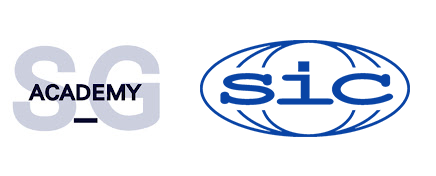Practices for supporting and improving quality management systems in accordance with the requirements of ISO 9001
This online course enables senior management to acquire the necessary knowledge and skills to leverage the full potential of quality management systems for effective and efficient business management.
Participants will learn to implement strategies for business process improvement, enhance operational efficiency, and increase customer satisfaction through ISO 9001 standards. The course also covers risk and opportunity analysis methods, internal auditing, and continuous improvement tools to help achieve a competitive advantage in the market.
Duration
45 hours
Language
English/Ukrainian
Format
100% online
Objectives
The purpose of the course is to provide participants with the knowledge and skills necessary to maintain and improve quality management systems in accordance with ISO 9001. Participants will learn to implement effective quality management strategies, analyze and mitigate risks, and utilize tools for continuous process improvement and customer satisfaction enhancement. The course focuses on developing competencies that enable organizations to achieve high-quality standards and strengthen their competitive position in the market.
Target audience
The target audience of the course includes:
- Senior management and organizational leaders: To gain strategic knowledge and skills necessary for effective quality management.
- Quality management system coordinators: To enhance and implement quality systems in compliance with ISO 9001 requirements.
- Internal auditors and quality specialists: To conduct effective audits, analyze, and improve processes.
- Engineers and production managers: To optimize production processes and increase efficiency.
- Any other professionals interested in improving the quality of their organizations and seeking deeper knowledge of quality management systems.
This course will help all these categories of participants enhance their knowledge and improve the effectiveness of their organizations.
Document on completion
Top manager qualification certificate, specialization «Practices for supporting and improving quality management systems in accordance with the requirements of ISO 9001», listed in the SIC International Register
Thematic plan
The course program includes two modules.
The program is designed for 45 hours, including time for studying theoretical material and taking tests.
Objectives
Module 1 The practice of implementing, maintaining and improving the quality management system in accordance with the requirements of ISO 9001:2015
Number of hours
|
1 |
Foreword |
1,5 |
|
2 |
General provisions of the standard |
2 |
|
3 |
Context of the organization |
2 |
|
4 |
Leadership |
2 |
|
5 |
Planning |
2 |
|
6 |
Support (resources) |
1,5 |
|
7 |
Operation |
5 |
|
8 |
Performance evaluation |
2.5 |
|
9 |
Improvement |
1 |
|
|
Testing |
1 |
Module 2 Best practices, tools and approaches for the development and continuous improvement of the business management system
Number of hours
|
1.1 |
Understanding the organization and its context. Auxiliary tools |
3 |
|
1.2 |
Understanding the needs and expectations of stakeholders |
1 |
|
1.3 |
FSMS scope and processes |
0,5 |
|
1.4 |
Leadership in business |
2 |
|
1.5 |
Policy and strategy |
1 |
|
1.6 |
Functions, responsibilities, and authorities |
1 |
|
1.7 |
Actions to treat risks and implement opportunities |
2 |
|
1.8 |
FSMS objectives |
1 |
|
1.9 |
Planning changes |
1 |
|
1.10 |
Resources. Efficient use |
1,5 |
|
1.11 |
Documentation |
1 |
|
1.12 |
Operational planning and control over current activities |
1 |
|
1.13 |
Internal audits |
1 |
|
1.14 |
Management systems analysis |
2 |
|
1.15 |
Nonconformities and corrective actions |
1 |
|
1.16 |
Improvement |
2 |
|
|
Testing |
1 |
